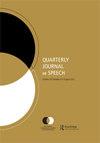全球修辞传统
IF 1.3
2区 文学
Q2 COMMUNICATION
引用次数: 0
摘要
跨学科的修辞学研究领域已经越来越意识到,演讲、说服和语言使用的艺术远远超出了几十年前用来代表基础的来源。在对希腊和罗马的修辞传统进行令人兴奋的研究的同时,越来越多的学者开始教授和撰写西方传统之外的其他形式的修辞学。全球修辞传统代表了一个关键的时刻,在这个不断发展的运动中,对什么是修辞或它可能是什么有更多的全球和国际阅读。作为第一本全面的教科书,既包括评论,也包括原始资料,它被恰当地定位为帕特里夏·比泽尔和布鲁斯·赫茨伯格的重要文本《修辞传统》的对应物。虽然我没有看到很多老师同时使用这两本教科书——两者的篇幅都很重要——但将国际或全球修辞传统与一本展示西方传统的流行书籍相提并论是很有意义的。吴辉和Tarez Samra Graban编辑的教科书成本合理,范围令人印象深刻。它可以很容易地用于教学课程,挑战和扩展我们在修辞经典中包含的内容和人物。它利用一系列当代修辞学学者来创建一个研究密集型的教科书,将激励用它来教学的学者和使用它的学生。全球修辞传统的设计对那些想要设计和实施全球、“非西方”或国际修辞课程的教师很有用。我试图给这本书适合的课程贴上标签,这揭示了全球修辞中这个项目核心的紧张关系。“修辞学”长期以来一直与希腊的概念、辩论和艺术术语联系在一起。将这一术语及其概念包袱应用于其他传统,既提供了与其他思想路线建立有价值的桥梁的潜力,而种族中心主义和学科习惯可能会使我们忽视这些思想路线,并冒着失去这些传统的见解和独特方面的风险。在本书的总论中,格拉班清楚地列出了编辑们所做的选择,以恢复我们在西方错过的传统和论文的修辞,即使这些传统不使用“修辞”或一个明确的等效术语。体量旨在建立桥梁并创造有意义的接触点,因此这种综合方法是合理的。格拉班的介绍也显示了对文化和语言敏感性的强调,这是本书在整理和评论其众多原始资料时将优先考虑的。所有这些都被翻译成英文,但编辑和个别评论员都强调在原文中存在细微差别和复杂性。引言借鉴了Jerry Won Lee的“半景观”概念,诚实地考虑了组织这样一卷书的挑战和选择。这本书很大程度上是按地区划分的,这种组织方式有它的用处。尽管如此,格拉班指出,这不应该掩盖这些传统的混合和全球化本质(特别是在最近的过去)。人们很快就会意识到,研究和教学全球或比较修辞学会让人对必须做出的选择非常敏感。我在这个领域的研究和教学中也感受到了这一点。一个人如何组织一门课程或一篇文章,而不轻视或过度简化传统和长期(和不断发展的)文化?本文章由计算机程序翻译,如有差异,请以英文原文为准。
Global Rhetorical Traditions
The interdisciplinary field of rhetorical studies has grown increasingly aware that the arts of speech, persuasion, and language use go far beyond the sources that used to represent the foundation as recently as a few decades ago. While exciting work continues to be done on the rhetorical traditions of Greece and Rome, more and more scholars are teaching and writing on rhetoric in its other forms outside of the western tradition. Global Rhetorical Traditions represents a pivotal moment in this evolving movement toward more global and international readings of what rhetoric is or what it could be. Serving as the first comprehensive textbook that features both commentary and primary sources, it is aptly positioned as a counterpart to Patricia Bizzell and Bruce Herzberg’s important text, The Rhetorical Tradition. While I cannot see many teachers using both of these texts—both are significant in size—this placing of international or global traditions of rhetoric on a parity with a popular book presenting the western tradition is significant. The textbook edited by Hui Wu and Tarez Samra Graban has a reasonable cost and an impressive scope. It can easily be used to teach courses that challenge and expand what and who we include in the rhetorical canon. It leverages a range of contemporary scholars from rhetorical studies to create a research-intensive textbook that will stimulate the scholars who teach with it and the students who use it. The design of Global Rhetorical Traditions is useful for teachers who want to design and implement courses in global, “non-western,” or international rhetoric. My attempt at putting labels on the sort of course this book fits reveals the tensions at the heart of this project in global rhetoric. “Rhetoric” has been long tethered to its Greek concepts, debates, and terms of art. Applying the term and its conceptual baggage to other traditions both offers the potential to build valuable bridges to other lines of thought that ethnocentrism and disciplinary habits might blind us to and risks missing the insights and unique aspects of those traditions. In the general introduction to the book, Graban clearly lays out the choices made by the editors to recover traditions and treatises as rhetorical that we have missed in the West, even if those traditions do not use “rhetoric” or a clear equivalent term. The volume aims to build bridges and create meaningful points of contact, so such a synthetic approach is justified. Graban’s introduction also shows the emphasis on cultural and linguistic sensitivity that the volume will prioritize when curating and commenting on its myriad primary sources. All are translated into English, but the editors and the individual commentators make a point of showing the presence of nuance and complexity in the original texts. Drawing on Jerry Won Lee’s notion of “semioscape,” the introduction honestly reckons with the challenges and choices of organizing such a volume. The book is largely divided by regions, an organization scheme that has its usefulness. Still, Graban notes that this should not occlude the hybrid and globalized nature of many of these traditions (especially in the recent past). One quickly gets the sense that researching and teaching in global or comparative rhetorics makes one acutely sensitive to the choices one must make. I have felt this in my own research and teaching in this area. How does one structure a course, or an article for that matter, without trivializing or oversimplifying traditions and long-standing (and evolving) cultures?
求助全文
通过发布文献求助,成功后即可免费获取论文全文。
去求助
来源期刊

Quarterly Journal of Speech
COMMUNICATION-
CiteScore
1.80
自引率
36.40%
发文量
39
期刊介绍:
The Quarterly Journal of Speech (QJS) publishes articles and book reviews of interest to those who take a rhetorical perspective on the texts, discourses, and cultural practices by which public beliefs and identities are constituted, empowered, and enacted. Rhetorical scholarship now cuts across many different intellectual, disciplinary, and political vectors, and QJS seeks to honor and address the interanimating effects of such differences. No single project, whether modern or postmodern in its orientation, or local, national, or global in its scope, can suffice as the sole locus of rhetorical practice, knowledge and understanding.
 求助内容:
求助内容: 应助结果提醒方式:
应助结果提醒方式:


